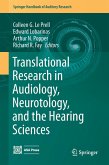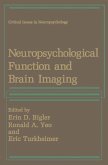One of the ways in which the cerebral organization of sensory sys tems in general, and the auditory system in particular, can be in vestigated is by studying defects of the perception and discrimina tion of acoustic stimuli resulting from destruction of different parts of the auditory system by a pathological focus in them or by their surgical removal. The disturbances accompanying lesions of the peripheral part of the auditory system (disturbances of sound conduction, dis turbances arising in the ha ir cells of the cochlea) are weIl known. It is much more difficult to determine the character of disturb ances specific for lesions of the central parts of the auditory sys tem and, in particular, of the auditory cortex. Types of visual disturbances in man associated with lesions of the visual cortex - homonymous hemianopia with preservation of central vision in unilateral lesions and cortical blindness in bilateral lesions - are described in the neurological literature (Brower, 1936). The visual agnosias found in lesions of the secondary visual areas and inferior temporal zones of the human and animal cortex are also weIl known. Analogous facts showing that destruction of the parietal cor tex disturbs complex (epicritic) forms of sensation but leaves more elementary sensation (protopathic) intact are described by Head.








